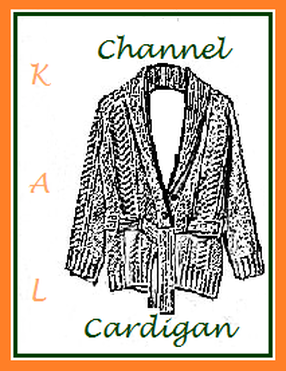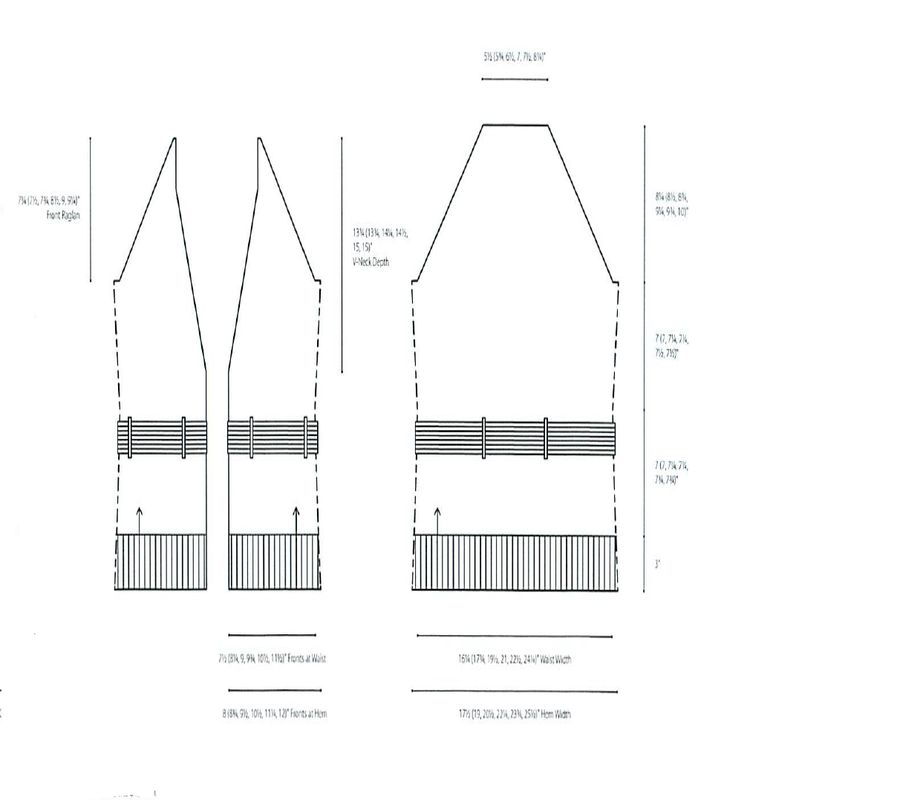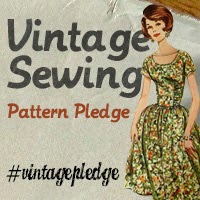Materials List:
Before we start knitting, we need to gather all the materials we'll require to knit our sweaters. The first thing you may notice is the variance in yardage required to complete the different sizes. In order to know how much yarn to purchase, you must first decide which size sweater you plan to knit. Choosing the correct size sweater is the most crucial decision towards a successfully executed sweater. After all, we want to knit sweaters that fit! There are six sizing options: 35¾ (38¾, 42, 45¼, 48½, 51¾)" circumference at the bust (buttoned). Additional size information can be determined using the sweater schematics on the third page of your pattern. These diagrams provide finished (post blocking) measurements for the sweater. Using these charts can be very helpful in customizing the fit of your garment. For instance, if you are pear shaped and need a sweater that provides ample room through the hip, you may decide to blend sizes by using stitch counts for a larger size at the bottom of your sweater and decreasing to a stitch count for a smaller size at the top/bust. If you are tall/short you can use these diagram to make adjustments to the total length of your completed sweater or adjust the position of the waistline to accommodate your figure. The author provides us with very valuable information with regard to sizing in this design. He tells us that the sweater is designed to fit with 4-5 inches of positive ease. Further, we're told that the model pictured is wearing the "38 3/4 size, with approximately "4 3/4 of positive ease. What does this mean? Positive ease means that the sweater will be larger than your actual body measurements. Therefore, if you want a sweater that fits in a manner similar to the sweater worn by the model, you should add between 4 and 5 inches to your bust measurement prior to choosing the size you plan to knit. Similarly, if you prefer a sweater that fits with zero ease, you should choose the size that corresponds with your actual body measurements. This first decision, size, will affect your finished garment greatly, so be mindful and choose the correct size to achieve the finished product you desire! 
0 Comments
Leave a Reply. |
Archives
March 2017
|





